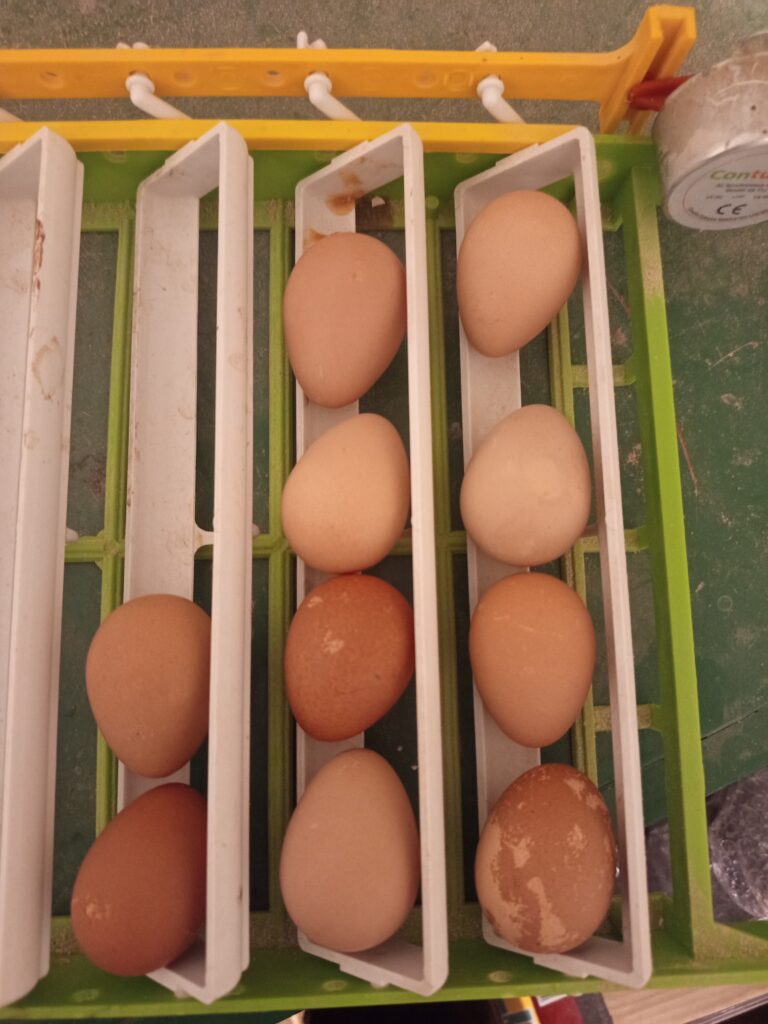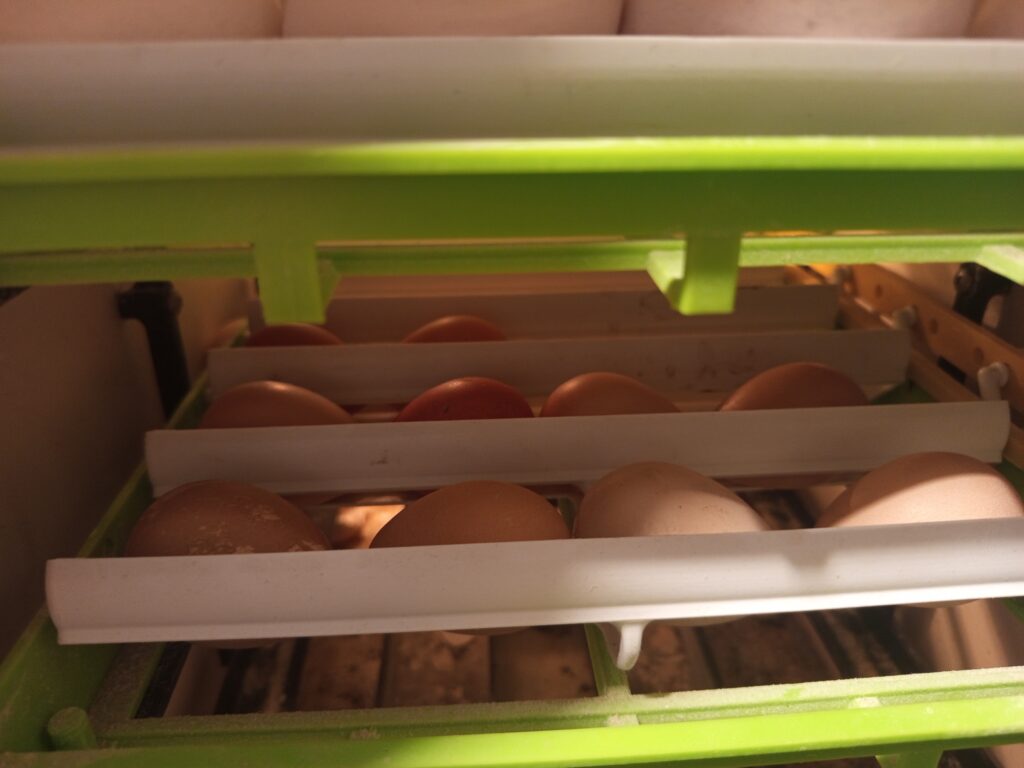Day 1 of what promises to be our most challenging incubation adventure yet. Yesterday evening, we carefully loaded 10 guinea fowl eggs into the incubator, officially beginning our first attempt at hatching guinea keets. After months of successful quail and chicken hatches, we’re venturing into completely new territory.

Why Guinea Fowl?
Guinea fowl aren’t just another pretty bird for our collection—they’re legendary for their pest control abilities. With tick populations becoming increasingly problematic in our area, the prospect of having natural, feathered pest control patrolling our property is incredibly appealing.
These distinctive spotted birds are renowned for consuming vast quantities of ticks, grasshoppers, and other unwanted insects while providing an early warning system for potential predators. Their distinctive alarm calls might be loud, but they’re incredibly effective at alerting the entire farm to anything unusual.
The Challenge Ahead
Guinea fowl have a reputation for being notoriously difficult to incubate successfully. Unlike our familiar chicken and quail eggs, guinea fowl present unique challenges:
Extended timeline: 28 days instead of our usual 17-21 day cycles means maintaining consistent conditions for a full four weeks.
Temperature sensitivity: Guinea fowl are reportedly more sensitive to temperature fluctuations than chickens, requiring even more precise control throughout the incubation period.
Lower hatch rates: Even experienced breeders often see hatch rates of 60-70% with guinea fowl, compared to the 80%+ we’ve achieved with other species.
Candling difficulties: Guinea fowl eggs can be harder to candle effectively, making it more challenging to monitor development progress.

Starting Conditions
We’ve set the incubator to our standard 37.5°C with humidity at 55%. The 10 eggs were sourced from a local breeder who specializes in guinea fowl, and they appear to be fresh and well-formed.
Each egg has been individually numbered for tracking purposes—a lesson learned from previous hatches where individual egg monitoring proved invaluable for understanding development patterns and potential issues.
The incubator is running smoothly after its recent use for the quail hatch, and we’ve double-checked all systems to ensure we’re starting with optimal conditions.
What to Expect
Days 1-7: Initial development phase. We’ll be monitoring temperature and humidity religiously, with the first candling scheduled for day 7.
Days 8-21: Rapid development period with a second candling planned around day 14 to assess progress.
Days 22-25: Final development phase leading up to lockdown.
Days 25-28: Lockdown period with increased humidity and no turning, culminating in what we hope will be successful hatches.
The Learning Curve
This represents our first serious attempt at a species we’ve never incubated before. Every aspect will be new—from candling techniques to understanding normal development timelines to recognizing signs of problems specific to guinea fowl.
We’re approaching this as much as a learning experience as a hatching attempt. Even if our success rate isn’t perfect, the knowledge gained will be invaluable for future guinea fowl projects.
Documentation and Tracking
We’ll be meticulously documenting every aspect of this incubation—temperature fluctuations, humidity variations, candling results, and any observations about how guinea fowl development differs from our experience with other species.
This detailed tracking will not only help us optimize our techniques but also provide valuable data for future guinea fowl hatching attempts.
Realistic Expectations
With guinea fowl’s reputation for challenging incubation, we’re trying to maintain realistic expectations. Success with 5-7 healthy keets out of 10 eggs would be considered excellent for a first attempt with this species.
However, we’re hoping our experience with other species and our careful attention to detail will give us an advantage in achieving higher success rates.
The Waiting Begins
27 days to go. The hardest part of any incubation is the waiting—resisting the urge to constantly check the incubator, maintaining patience during the long development period, and trusting the process to work.
Guinea fowl incubation will test our patience more than any previous hatch simply because of the extended timeline. Four weeks feels like forever when you’re eagerly anticipating results.
What’s at Stake
Beyond the immediate goal of hatching healthy guinea keets, this incubation represents our expansion into specialty poultry management. Success here opens doors to breeding guinea fowl, expanding our natural pest control capabilities, and adding another dimension to our sustainable farming operation.
The incubator is humming, the eggs are settling in, and the countdown has officially begun. Here’s hoping that in 28 days, we’ll be celebrating our first successful guinea fowl hatch and welcoming these unique birds to Sulbi Talu.
Have you ever tried incubating guinea fowl? Share your experiences, tips, and challenges in the comments below—we’d love to learn from others who’ve attempted these notorious birds!
What’s been your most challenging species to incubate? Tell us about your experiences with difficult or unusual hatching projects!